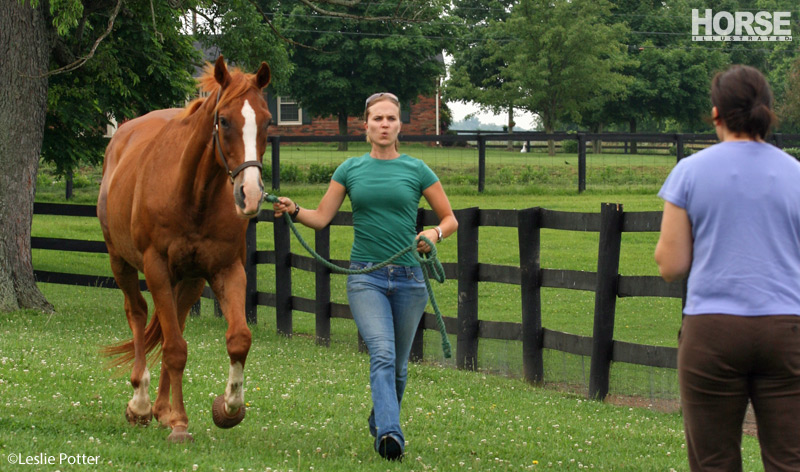Causes of Equine Lameness: Degenerative Joint Disease


Degenerative Joint Disease
Degenerative joint disease (DJD) is a common occurrence in older, and sometimes not so old, equine athletes. The body is designed to maintain the cartilage in the joints, repairing damage after normal wear and tear. In athletic horses, however, excessive wear can overwhelm the repair process. As forces of movement and impact cause trauma to the cartilage, there is inflammation and an increase in blood flow to the area. This leads to heat and swelling and brings inflammatory enzymes to the joint, which further work to degrade the cushioning cartilage. The result over time is a net loss of cartilage, the hallmark of DJD.
The signs of degenerative joint disease include lameness, which can range from mild to severe; heat and swelling around a joint; and sometimes a reduced range of motion of the joint. These signs can progress slowly or show up acutely once your horse’s pain threshold has been exceeded.
Diagnosis of DJD, once the joint in question has been identified, involves radiography. X-rays will show a decreased joint space, and changes in density and remodeling of the bone in advanced cases.
Management of DJD should be aimed at early intervention and maintaining a healthy population of chondrocytes by reducing inflammation. Chondrocytes (cells that create cartilage) that are kept healthy through rest and the appropriate therapies will continue to repair the damage. Once these cells are lost, however, there is no reversing the process or creating new cartilage.
Changing the horse’s training program to decrease joint trauma will help but isn’t always feasible. Anti-inflammatories such as phenylbutazone (bute), firocoxib (Equioxx) or flunixin meglumine (Banamine) can block the production of the damaging inflammatory enzymes but should be used judiciously as they can have serious side effects on the GI tract and kidneys.
Chondroprotective products such as polysulfated glycosaminoglycan (Adequan) can decrease inflammation, reduce pain and encourage production of cartilage and joint-lubricating fluid. They are only effective if there is some cartilage left. Products that contain hyaluronic acid can mediate inflammation and improve joint function but may not be as effective in promoting new cartilage growth. Joints can also be injected with anti-inflammatory medications such as corticosteroids that will very effectively decrease inflammation, though they do not heal damaged cartilage or aid in new development.
Back to The Top 5 Causes of Equine Lameness >>
Recent Posts
Harness Your Monkey Mind: Be More Mindfully Present Around Horses
Does time spent with your horse feel more distracted and scattered, rather than present and meaningful? If so, you’re not…
ASPCA Right Horse Adoptable Horse of the Week: Frey
Welcome to Horse Illustrated’s weekly installment of the Right Horse Adoptable Horse of the Week, offered in partnership with the…
An Overview of Strangles in Horses
Strangles. The name of the disease itself can allude to a terrible demise, but most horses that contract strangles recover…
Colorado Horse Rescue Launches HorseAlert in California to Facilitate Equine Evacuations
Colorado Horse Rescue (CHR) expands its lifesaving HorseAlert system to California to help horse owners evacuate safely during natural disasters.…
Vet Adventures: Big Angus, Part Two
In last week's column, Dr. Diehl had just finished drawing blood to help determine the cause of Angus’s stubborn weight…
Equine Sedation 101
It's likely that at some point during a horse’s life, he will need to be sedated, either for a routine…